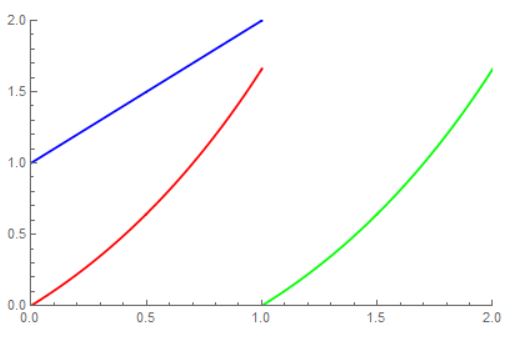Gentlemen...It seems that I managed by myself to put together the code in Mathematica as it should look by comparison with the code in Mathcad, and this is with my little experience of using Wolfram Mathematica.
What is sad is that I thought that I would find more experienced people here in a community of people that use Wolfram Mathematica. I thought I would find the help I needed here in the Wolfram Mathematica community, due to the fact that I assumed I would meet more experienced people here...but it seems that I was wrong in assuming this.
It also seems that I can't really rely on the Wolfram Mathematica community, which in principle shouldn't have been the case (because that's why a community is created, for help). I don't even want to think what I would have done if I had to fight with a more complex code...
Sorry that I had to express these not very pleasant feelings, but...
Also, the code is implemented with for loop...
f[x_, y_] = 1 + y/x + (y/x)^2;
t[0] = 0.;
x[0] = 1.;
y[0] = 0.;
Subscript[t, start] = t[0];
Subscript[t, final] = 1.;
h = 10^-3;
n = (Subscript[t, final] - Subscript[t, start])/h;
Y1 = {{t[0], x[0]}}; Y2 = {{t[0], y[0]}}; Y3 = {{x[0], y[0]}};
For[i = 0, i \[LessSlantEqual] n-1, i++,
{
t[i + 1] = t[i] + h,
x[i + 1] = x[i] + h,
y[i + 1] = y[i] + h*f[x[i], y[i]],
AppendTo[Y1, {t[i + 1], x[i + 1]}],
AppendTo[Y2, {t[i + 1], y[i + 1]}],
AppendTo[Y3, {x[i + 1], y[i + 1]}]}]
Show[ListLinePlot[Y1, PlotStyle -> Blue,
PlotRange -> {{0, 2}, {0, 2}}],
ListLinePlot[Y2, PlotStyle -> Red, PlotRange -> {{0, 2}, {0, 2}}],
ListLinePlot[Y3, PlotStyle -> Green, PlotRange -> {{0, 2}, {0, 2}}]]

